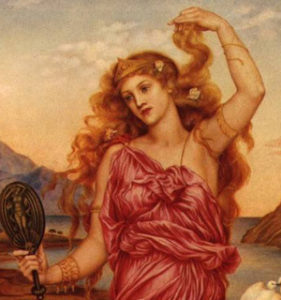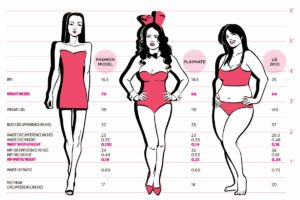Women’s Objectification in Pop Culutre
Society has always valued beauty from the period of ancient civilization. The ancient Greeks believed that beauty consisted of three major components including Symmetry, Proportion, and Harmony (Winwood, 2016). This component was modernized into the certain standard as propounded by today’s society. During the period of 1950s-The Golden Age of Hollywood the terms “Curvy-hourglass figure”, “Large Busts” and “Slim waist” worked as the default standard for women’s body shape (Holla, 2018).
In popular culture, media and advertisement have a large impact on how we see and feel about things around us. In past, Women’s were portrayed as a sex symbol, housewives, unintelligent and conformist. Although, things are changing now in the name of women empowerment the underlying meaning has been the same. Women in popular culture have been objectified more than ever.
We are exposed to the objectification of women on the TV, Internets, Apps, Magazines, and News. They are being used as sexual objects; to grab the attention of men, to help sell a product. Also, big busted, thin, young and blonde is the ideal image for many females. Advertisements are trying to sell these ideal women as a product that any average women can transform into.
In 2008, famous celebrity Lady Gaga reviled her trauma of being bullied. The reason was she didn’t look like the “Ideal Image” of a woman. She was teased for being ugly, having a big nose, being annoying. During one interview in 2008, she said that she used to be called sh*t (Hiatt, 2011). But she stood against all these criticism and did the hard work to get into the “Ideal Shape” to reach into the level from where her voice can be heard. Now she is going against this and advocating against women objectification.
The effects of objectifying women have been seen more in the last 50 years. According to NEDA, to gain the “Ideal Body” women are forcing themselves for “Crash Diet” which has caused Eating Disorder which is becoming large within the American Population. From the survey done in 2015 by NEDA, it is concluded that 80% of 10 years olds fear to be fat (Grefe & Beale, 2012). This survey raises a modern-day issue of an individual’s interest to portray themselves as the “ideal person” rather than accepting natural growth.
From the beginning of Modern Civilization till now women are being objectified. Although, if women are tested intelligent, possessed strong arms they are advised to follow the sexist rule created by society. At present, all forms of media ranging from traditional to nontraditional generate an ideal image of what is beautiful. This is evident through the cult of beauty propelled by today’s society.
To change the overall perspective of society it is necessary for women to accept that beauty lies in the eye of beholders and they should feel mentally beautiful and accept the traits given by nature to them (Official Channel & Dove, 2013).
Works Cited
Grefe, L., & Beale, R. J. (2012, October). Summary of Key Findings. Retrieved January 11, 2019, from National Eating Disorders Association: https://www.nationaleatingdisorders.org/blog/summary-key-findings-nedaoptum-survey
Hiatt, B. (2011, June 9). Rolling Stone. Retrieved from Rolling Stone: https://www.rollingstone.com/music/music-news/deep-inside-the-unreal-world-of-lady-gaga-86008/
Holla, S. (2018, January 22). Objectification of Women. Retrieved from Prezi: https://prezi.com/4rsirxealrom/objectification-of-women-in-pop-culture/
Official Channel, D., & Dove, O. (2013, April 14). Dove US official Channel on Youtube. Retrieved from Youtube: https://www.youtube.com/watch?v=XpaOjMXyJGk>=
Winwood, A. (2016, April). The cult of beauty in Ancient Greece and Modern media. Battler Columns, 1. Retrieved January 11, 2019, from http://ab.edu/wp-content/uploads/2016/05/April-Edition-Battler-Columns.pdf
All Pictures are derived from the internet






